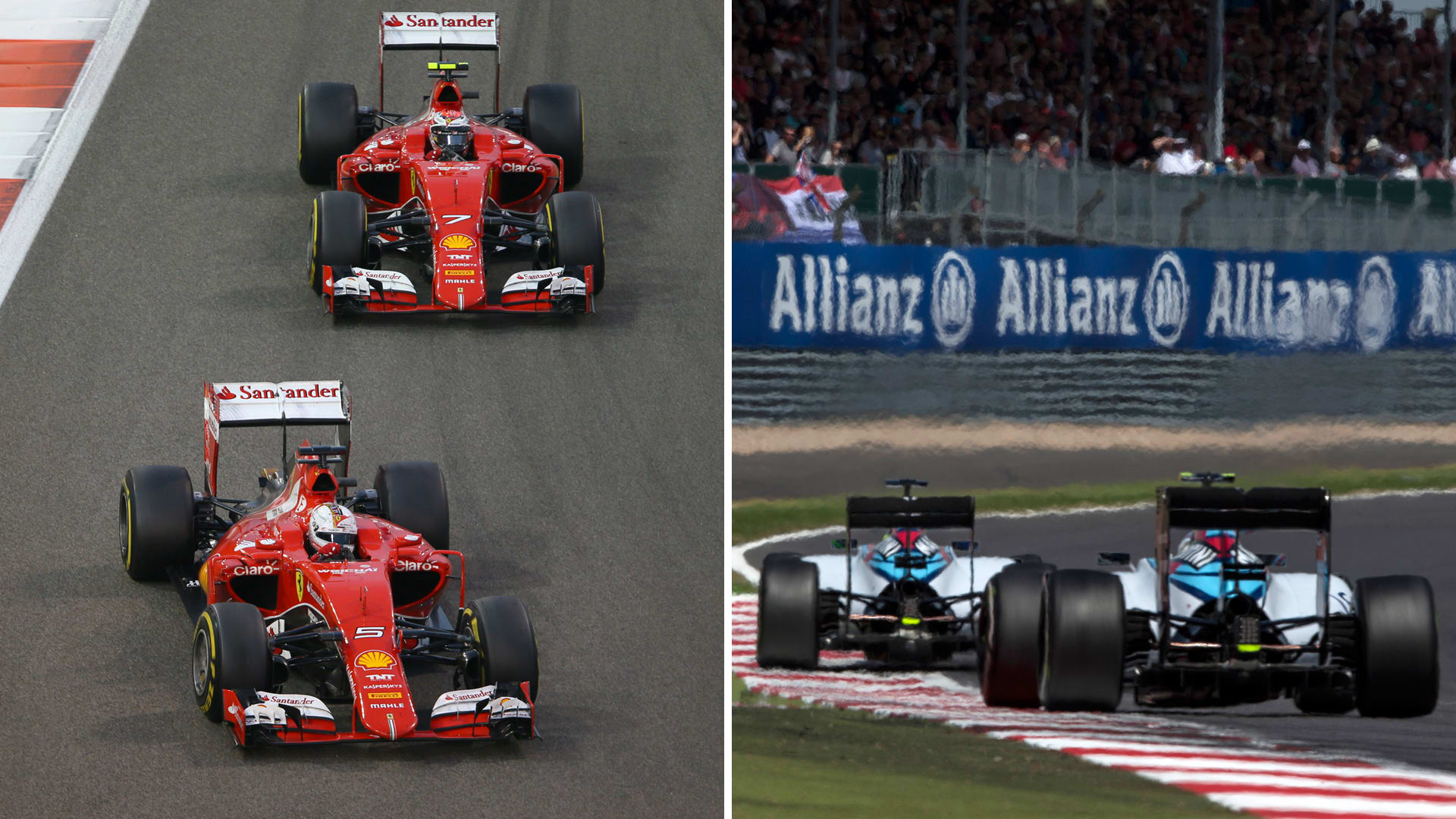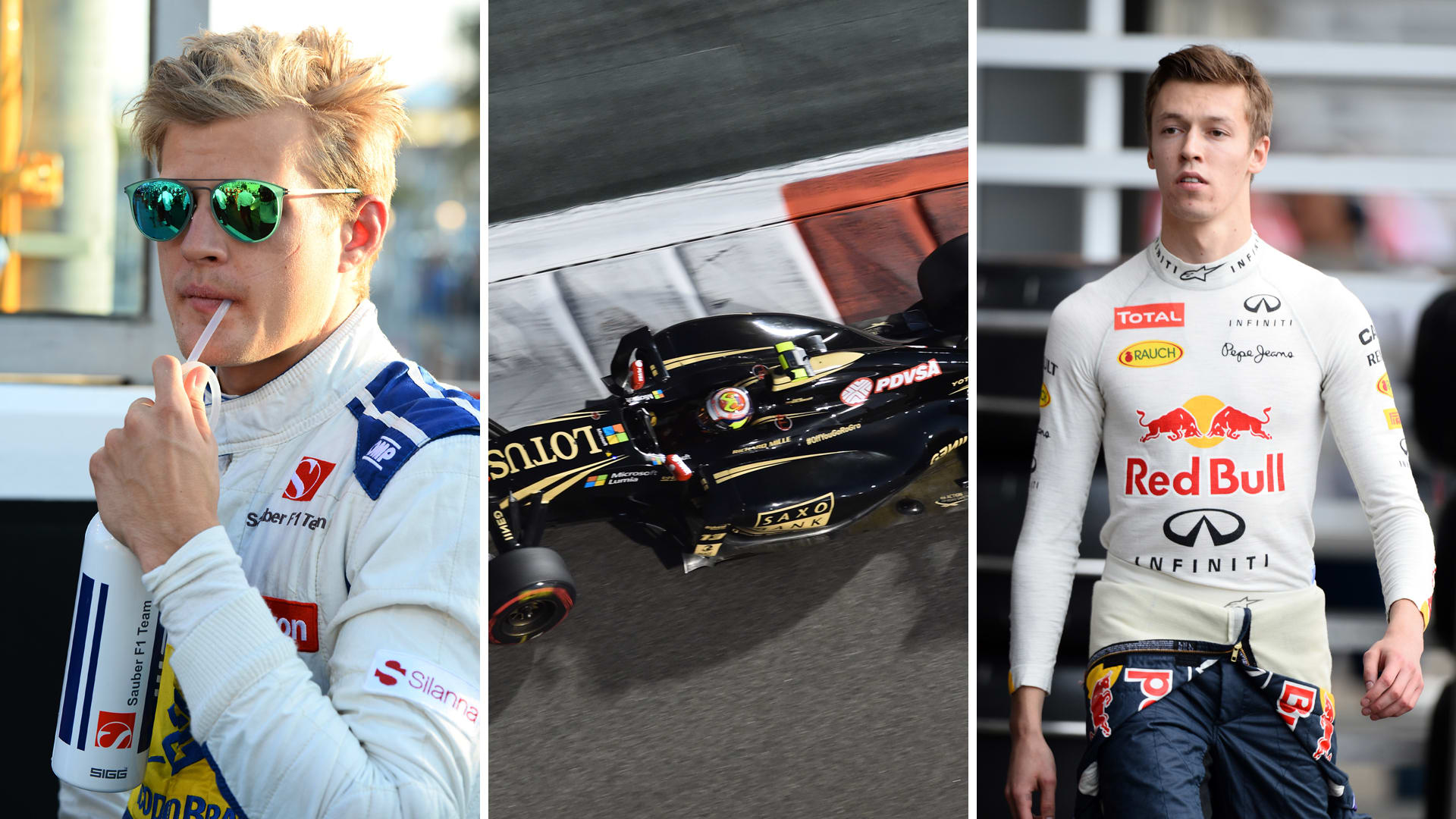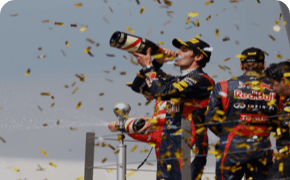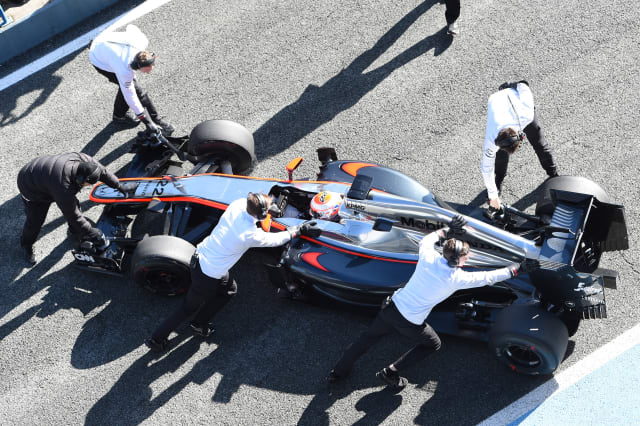How do you judge driver performance over any single season in Formula One racing - particularly one where the top ten in the drivers' championship finished in team order? Looking at the points table will tell you so much - but a different picture emerges by drilling down into the underlying pace of each driver over the 19 races.
We compared every driver's best lap, at each race, to the outright fastest time, which is expressed below as 100. Those tallies are then added up and divided by 19 - or fewer if they were not present, like Fernando Alonso in Australia - to produce an index for each driver over the entire season.
Hamilton, as noted, heads the field, with Nico Rosberg close behind - and a clear gap between Mercedes and the rest of the pack. Marussia meanwhile are comfortably at the back - indeed the scale has had to be adjusted accordingly. In between those outliers, though, the data is far more interesting - and it doesn't make great reading for some...
The driver makes the difference
Perhaps the key detail revealed by the Supergrid is just how much difference the driver makes in F1 racing. Mercedes are streets ahead of the opposition admittedly, but behind them the chart reads Ferrari, Williams, Ferrari, Red Bull, Williams, Red Bull, Lotus, Toro Rosso, Force India...
The relative gaps between team mates are also expressed far better over a season than just one race. Where points scored in each race can depend upon a multitude of factors - race strategy, traffic, tyre conservation, rapid pit stops, one moment of brilliance or bad luck - looking only at the ultimate speed of each driver paints a revealing picture of who excelled, and who struggled, in 2015.
Who comes off worst?

If beating your team mate is the first job for any driver, two were markedly off the pace in 2015 - Kimi Raikkonen and Felipe Massa.
Both men actually followed their respective team mate home in the championship - Raikkonen was fourth on 150 points (128 behind Sebastian Vettel) while Massa was sixth with 121 points, just 15 behind Valtteri Bottas.
But in terms of underlying pace, both men had a clear deficit to their partner. Taking the average percentages used for the Supergrid, both men have a deficit of 0.55 percent. That might seem miniscule, but it's the largest gap between team mates of the entire field - and in a sport where inches can make the difference, it highlights the fact the two veterans have significant ground to make up in 2016.
There is one caveat: the rain-hit race in Austin has an impact for both drivers. Raikkonen's crash just before mid-distance meant he was not out on track when conditions were at their best - and his score for that race suffers as a result (the best times are typically set in qualifying, but due to Hurricane Patricia the fastest times in Austin came during the race). As for Massa, he too fared badly as Williams struggled massively for handling - which had an exaggerated effect on his score as team mate Bottas escaped the same fate by only managing four laps, which meant we discounted the race from the Finn's overall score.
Who else struggled?

It's perhaps not overly surprising that Pastor Maldonado fares badly compared to Romain Grosjean in our Supergrid. The Venezuelan had the worst qualifying head-to-head of the entire field, for example, trailing Grosjean 17-2. He was well beaten in the championship too, scoring 27 points to Grosjean's 51.
What is more surprising is that his Supergrid deficit to his team mate - 0.31 percent - is actually smaller than those of Marcus Ericsson, on 0.37, and Daniil Kvyat, on 0.36.
Like Raikkonen and Massa above, Ericsson is not helped by his weekend in the USA - an electrical issue forced his retirement mid-race, meaning he too was unable to profit from the best conditions of the weekend in the closing stages. Even without that, though, the Supergrid reveals a clear speed deficit to Nasr - not revealed by their qualifying head-to-head, where Nasr beat Ericsson 10-9.
Kvyat is another odd case. On the face of it, the Russian had an impressive first season with Red Bull - he out-scored Daniel Ricciardo 95 points to 92, and beat him in qualifying one third of the time.
Even so, Kvyat came under pressure from his Red Bull bosses to improve, particularly in the early races - and the data for the Supergrid confirms he was struggling. In the first six races, Kvyat's deficit to Ricciardo was 0.61 percent - among the highest in the entire field. Crucially for the young Russian, he began to close that gap as the season progressed - over the last three races, for example, it was down to 0.12 percent, and indeed he was the faster of the two Red Bull drivers in Brazil.
Effectively, the data shows why Red Bull put more pressure on Kvyat than Ricciardo, despite the former being ahead in the championship - but it also shows that Kvyat improved markedly, which bodes well for 2016.
The closest fights of the field

Statistically speaking, the three closest intra-team battles of 2015 came at Toro Rosso, Force India and McLaren. Of the three, McLaren pair Fernando Alonso and Jenson Button had the tightest fight - indeed there was almost nothing to separate the two former world champions.
In this instance, Australia has been discounted given that Alonso was not able to race in the season-opener. Momentum swings between the two drivers over the other 18 races - Alonso had a clear deficit to Button in Canada and Austria, for example, but equally was far faster in Bahrain, Monaco and the USA. Overall, there was just 0.01 percent difference between the two, with Alonso having the slight edge. As expected, of course, McLaren ended the season comfortably behind every other team bar Marussia.
Next up are Force India. The team's two drivers matched each other almost exactly over the first six races, before Hulkenberg found a slight edge in Canada and the following few races. Perez, however, had the upper hand at the season's end, out-pacing Hulkenberg in Japan, the USA, Mexico and Abu Dhabi, meaning there was just 0.05 percent difference between the pair's season-ending averages.
The third closest fight, meanwhile, came at Toro Rosso - and interestingly it is Carlos Sainz, not Max Verstappen, who has the slightest of edges. As with McLaren and Force India, the advantage between the two swings one way and then the other throughout the course of the season, but it is Sainz - whose score in Russia was disregarded following his massive practice crash - who emerged ahead, just 0.09 percent in front of his fellow rookie.



















